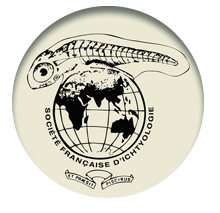Comparison of taste bud form, number and distribution in the oropharyngeal cavity of lizardfishes (Aulopiformes, Synodontidae)
How to cite: Fishelson, L., Golani, D., Galil, B., & Goren, M. (2010). Comparison of taste bud form, number and distribution in the oropharyngeal cavity of lizardfishes (Aulopiformes, Synodontidae). Cybium, 34(3): 269-277. https://doi.org/10.26028/CYBIUM/2010-343-005
The present study compares the distribution, form and number of taste buds (TB) in the oral cavity of several species of lizardfishes (Synodontidae) belonging to the genera Saurida, Synodus and Trachinocephalus, from various regions. The oral cavities of the studied lizardfishes are occupied by dense rows of sharp teeth, leaving bare only small areas of the epithelium, on which the TB are exposed. In all the studied species, groups of type I and type II TB predominate, protruding on skin-papillae featuring groups of sensory cells, 3-5 μm in diameter. Fewer types III TB are found, mostly adjacent to the pharyngeal region. The TB in the frontal part of the oral cavity are situated on lamellae between the teeth on the anterior part of the upper and lower jaws, with rows of single TB along the interior sides of the jaws. Small numbers of TB are also found on the basibranchials of the 3rd and 4th gill arches and the ceratobranchials of the 4th arch. In the studied species, the total number of TB in the oral cavity range between 458 (± 30) in Synodus dermatogenys to 1738 (± 120) in S. variegatus, small in number compared to fishes of the same dimensions belonging to other systematic groups. The oral sensory area thus formed by the exposed surfaces of the sensory cells range between 8,976 μm2 in S. dermatogenys to 34,064 μm2 in S. variegatus, compared to circa 300,000 μm2 in some cichlid fishes. It would thus appear that lizardfish predation on larger prey, such as other fishes, relies more on visual detection, while chemical oral recognition (gustatory) of engulfed prey possibly plays a secondary role.


